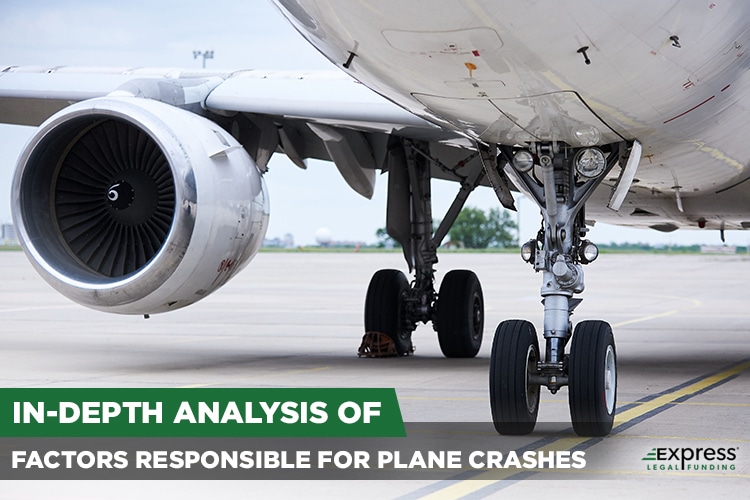
Understanding the causes behind plane crashes is essential for improving aviation safety and preventing future tragedies.
While air travel remains one of the safest modes of transportation, accidents do occur—and they often result from a combination of complex factors. From mechanical failures and pilot errors to external influences like weather and air traffic control, each incident offers critical lessons.

In this article, we’ll break down the primary factors responsible for plane crashes, shedding light on how they occur and what can be done to minimize risks in the skies.
Common Causes and Factors Responsible For Plane Crashes
Unfortunately, making any aircraft 100% crashproof is impossible since human error is a factor, and several common elements of air travel can trigger a catastrophic failure.

Understanding these aspects may help ease your fears and enlighten you on specific legal rights you might not have realized existed and can be at your disposal.
Before we move into the sections about the chances of your being in a plane crash and the steps you should take following one, let’s discuss a brief history of the first successful powered airplane flight.
When Was the First Airplane Flight Accomplished?
After four years of developing it, the very first airplane was constructed and operated by Wilbur and Orville Wright (the Wright Brothers) on December 17, 1903, in Kitty Hawk, North Carolina, with Orville piloting the now-famous Wright Flyer.
1903 Wright Flyer I Limitations
Due to the limitations of aerospace technology in the early 20th century, the Wright Flyer was nowhere near as complex as modern aircraft. It was developed using the gliders the brothers made as a baseline for the final design.
The Wright Flyer was built using wood from spruce and ash trees, and they were forced to commission a man named Charlie Taylor to construct a custom engine for their machine.
The final product functioned like a bicycle with wings and was revolutionary for the time (despite being primitive compared to modern aircraft).
While the Wright Flyer was the precedent for all future aircraft, it lacked the aviation safety features present in modern iterations.

As a result, the Wright Flyer was technically one of the riskiest flights ever performed.
Despite the risk, the Wright Flyer was a success, but that does not mean the risk has disappeared from modern planes.
To proceed with this article’s theme, let’s briefly discuss the circumstances of the first powered aircraft crash in history.
When Was the First Plane Crash?
According to the United States Air Force Historical Fact Division and the Library of Congress, the first airplane crash occurred on September 17, 1908, at a flight demonstration in Fort Myers, Virginia. The plane, Wright Model A, was piloted by Orville Wright, who was severely injured in the crash.
The crash led to one fatality: that of the U.S. Army Lieutenant Thomas E. Selfridge, observing the flight demonstration from the ground.
A mid-air mechanical issue caused the aircraft crash, as a propeller blade broke while Orville Wright was flying at an altitude of 75 feet.
What Are the Odds of an Airplane Crash?
While plane crashes are terrifying and might be fatal depending on where the plane crashes and at what velocity, the odds of a crash are remarkably low.
According to a report released by the International Air Transport Association (IATA), there is only a 1 in 11,000,000 (0.0000009%) chance of a plane suffering a catastrophic failure that causes a crash. That means the odds of you being involved in a plane crash are so low that even if you fly every day, it will not present a significant threat to your safety.
Unfortunately, one consideration must be made when weighing the odds of a plane crash.
The catalyst behind every crash is different and might increase the risk of your specific flight crashing depending on the particular situation.
That is not to say that your odds of an airplane crash are remotely high, but rather that several details combine as factors that determine the average overall risk of any particular flight crashing.
Something to remember is that each flight is unique and similar to car accidents, with some crash-causing risks that can be higher given the particular circumstances.
Why Do Planes Crash?
There are several reasons why airplanes crash, with some of the most common causes of aviation accidents included in the following list:
Common Causes of Aviation Accidents:
- Mechanical failure
- Engine failure
- Human error (i.e., air traffic controller negligence or improper loading of cargo)
- Pilot error
- Airplane maintenance negligence
- Bird strikes
- Poor training
- Defective equipment
- Inclement weather
- Sabotage
#1 – Mechanical Failure
The most concerning aspect of modern-day airplanes is that they are incredibly complex feats of engineering that are comprised of multiple systems that work in concert with each other.
Similar to automobiles, one flaw or defect in the engineering of an airplane can cause the entire vessel to fail.
Mechanical failure is a threat to any advanced technology that contains moving parts and relies on complex software to function.
Still, the severity of such failures increases exponentially when the machine is an aircraft transporting passengers thousands of feet in the sky.
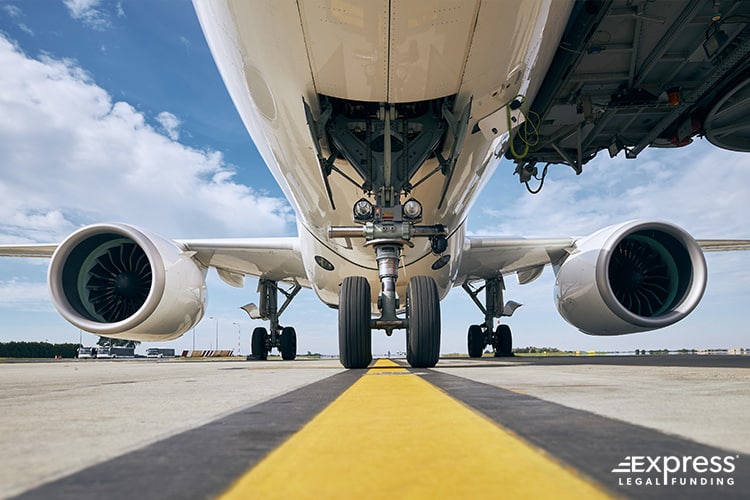
It’s a good news and bad news situation for people worried about the risk of broken airplane parts.
- The good news is that mechanical failure accounts for only 20% of all plane crashes.
- The bad news is that mechanical failure usually has dire consequences for the passengers and crew aboard the plane.
What Is the Kegworth Air Disaster?
The Kegworth air disaster, which occurred on January 8, 1989, is one of aviation’s most significant fatal accidents resulting from a combination of mechanical failure and subsequent pilot error.
British Midland Boeing 737-400
The flight involved a Boeing 737-400 aircraft transporting 126 people from Heathrow to Belfast crashing onto a motorway’s embankment (Similar to an interstate highway in the U.S.).
The accident began soon after the jet took off when a fan blade broke in the newly upgraded left engine.
The detached blade caused damage to the left engine’s internal components, at which time passengers heard a loud pounding noise and sensed fierce vibrations.
All the while, the cabin began to fill with smoke pouring in through the plane’s ventilation system.
Pilot Error About Engine Malfunction
Due to confusion, the airline pilot incorrectly throttled the power to the right engine, which was working correctly to reduce the strain (they should have throttled the left engine with the detached blade).
This critical, wrong decision is what ultimately led to the crash.
During the plane’s descent, the autothrottle system sent an increase of fuel to the still partially functioning left engine, which could not handle the extra fuel and exploded before it completely stopped working, which caused the now engineless plane to crash.
The Boeing 737-400 plane crash killed 47 passengers (39 immediately and eight later succumbed to their injuries) and seriously wounded another 74.
The Kegworth air disaster was one of several crashes that rocked the air travel industry and caused manufacturers to modify their designs to reduce the risk of repeat incidents and increase regulations put in place.
#2 – Mechanical Failure From Maintenance Neglect
Unfortunately, mechanical failure is inevitable if the parts are used for long periods, and maintenance is neglected. General wear and tear could cause an essential component to break and damage the entire plane.
Fortunately, there are instances where skilled pilots can overcome mechanical failure and land the plane safely.
British Airways Flight 5390
The British Airways Flight 5390 incident, which took place on June 10, 1990, is a prime example of mechanical failure due to maintenance neglect.
The harrowing flying experience began with the left panel of the pilot’s windscreen separating from the rest of the plane, causing explosive decompression of the cockpit window.
Pilot Sucked Out of Plane
Subsequently, the pilot, Timothy Lancaster, was partially ejected headfirst out of the flight deck due to the pressure change.
While Lancaster’s upper torso was outside the cabin, his knees were stuck on the flight controls, causing the plane to rapidly descend.
The crew had to hold onto the pilot’s legs for more than 20 minutes while the co-pilot, Alastair Atchison, worked to regain control of the aircraft and performed an emergency landing. Fortunately, everyone survived, and only the pilot suffered any injuries.
Timothy Lancaster’s injuries included frostbite, shock, bruising, upper extremity fractures, and a dislocated shoulder.
Interestingly, at one point during the British Airways Flight 5390 incident, the crew holding onto Lancaster thought he was dead and may have been inclined to let go of him out of sheer exhaustion.
However, the co-pilot instructed them not to let go for fear that the pilot’s body would collide and cause damage to the plane’s left engine or wing.
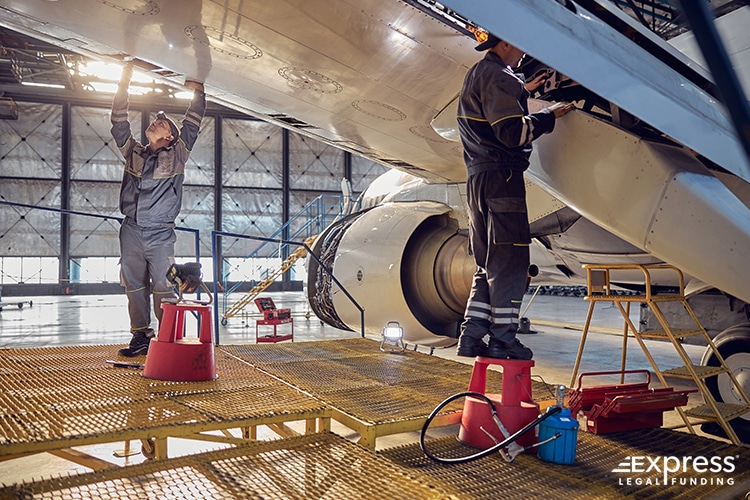
Investigators determined that a shift maintenance manager was responsible for the detached windscreen. They used too short of bolts for the plane’s countersinks and failed to meet British Airways’ engineering policies.
Ultimately, the engineers responsible for maintaining the planes while grounded have the lives of passengers and pilots in their hands.
If the engineers fail to maintain the plane, it could cause a critical issue while it is in mid-flight.
The problem is that sometimes, correctly operating planes crash due to human error rather than mechanical trouble. This leads us to discuss air traffic controllers and pilots making mistakes.
#3 – Air Traffic Controller and Pilot Error
Although mechanical error is one of the most significant safety issues in air travel, the plane’s ability to fly safely is limited by the actions of the people responsible for directing and navigating an airplane flight. We all make mistakes, which is part of being human.
However, some mistakes carry more weight and are potentially more severe, such as ones that can cost lives.
Unfortunately, air travel is no exception to this concept of people making lethal mistakes, as numerous flying tasks require human oversight.
Air Traffic Controller Mistakes
For this very reason, working in aviation can be highly stressful, especially for air traffic controllers who are responsible for directing hundreds of flights a day and protecting the lives of tens of thousands of people onboard.
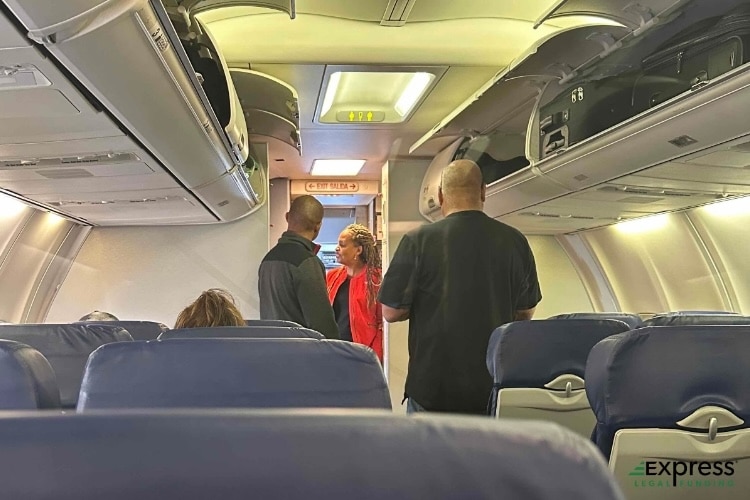
Fact: The average flight has more than 100 passengers, a pilot, a co-pilot, and its crew members (i.e., flight attendants).
The likelihood of mid-air collisions between aircraft increases when air traffic controllers’ performance drops.
Although significantly rarer than crashes caused by pilot errors, air traffic control negligence does happen and can lead to controlled flight crashes.
Airplane Pilot Errors:
Pilots must operate the plane properly and avoid hazards that might endanger passengers, while air traffic controllers must help pilots navigate the skies to avoid bad weather or other aircraft while respecting restricted airspace.
U.S. Airways Flight 1549
A more recent example of a potential pilot error is the now famous U.S. Airways Flight 1549 incident on January 15, 2009.
This incident saw Chelsey “Sully” Sullenberger III fly an Airbus A320 into a flock of geese, damaging the jet’s engines and forcing him to make an emergency landing in the Hudson River.
Flight simulators show that Sullenberger could have successfully returned to Laguardia airport to perform an emergency landing had he diverted the jet immediately after colliding with the geese, which means he would not have needed to ditch the plane by landing in the Hudson River.
What Percentage of Plane Crashes Are Pilot Error?
According to NASA, total pilot errors account for more than 50% of all plane crashes, making it the most common cause of plane crashes and a significant threat to aviation safety in general.
#4 – Inclement Weather Conditions
Human and mechanical errors are details that are at least partially within our control to prevent. Unfortunately, humans can’t control the weather, and airplanes do not perform well in turbulent weather, which often, combined with human error, can cause them to crash.
Stormy weather and low visibility from thick rain clouds can make take-off and landing dangerous, especially during stormy seasons where winds and rain are often at their highs.
The length of the flight schedule delays increases the longer it takes for inclement weather to break, which is compounded by the fact that adverse weather is the number one reason for flight delays.
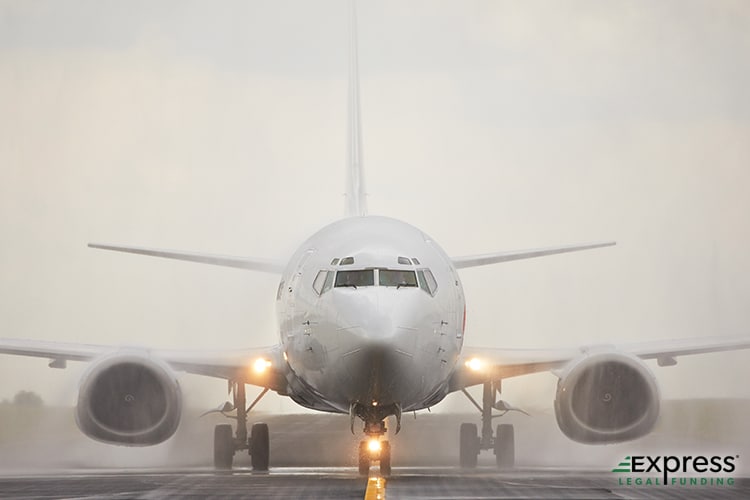
In 2023, the weather has been extra unpredictable. Certain regions of America, once arid year-round climates, saw significant flash floods and high winds.
While this weather can cause chaos on the ground, it is far worse for those flying since winds are much stronger the further up you go (higher altitudes).
Plane Severe Turbulence
For airplanes, this results in a phenomenon called turbulence (extreme winds that cause the plane to shake, similar to a car traversing a bumpy road).
Generally, this weather is circumnavigated by pilots via advice from air traffic controllers given through the airplane’s radio and information from pre-emptive weather reports.
Unfortunately, as we all know, the weather is not always willing to behave as predicted and can shift suddenly.
A sudden and unforeseen weather shift can severely affect a plane’s trajectory and stability mid-flight and, if severe enough, can cause a plane to crash into the ground.
Runway Overrun: What Happened To Southwest Airlines Flight 1248?
Even more surprising is that extreme weather can scuttle a flight at the last minute when it hits the runway, notably seen in an incident involving Southwest Airlines pilot error on December 8, 2005.
Southwest Airlines Flight 1248 flew from Baltimore to Chicago but was caught in a snowstorm during its final descent. As it landed, it went radically off-course and crashed into a line of cars, killing a six-year-old boy (ground fatality).
The snowstorm had frozen the runway over, causing the plane’s wheels to skid on the ice because of its remaining momentum from the descent.
This tragic incident perfectly illustrates the impact weather conditions can have on a plane as it lands, let alone while it is mid-flight.
Fortunately, thunderstorms and severe weather only account for 10% of all disastrous aviation accidents, and it’s not the most common cause of aircraft accidents.
Plane Crashes and FAA Regulations
The regulation and architecture of modern aircraft design have come a long way since the days of the Wright brothers, especially in commercial airliners. Despite advancements, crashes occur due to diverse reasons.
The Federal Aviation Administration (FAA) and the National Transportation Safety Board (NTSB) often conduct extensive investigations after air crashes to evaluate the causes and enforce measures to prevent similar future incidents.
It’s in these crash investigations that black box flight recorder data comes in as being a critical source of evidence. The recordings can be even more important in crash incidents involving a plane sinking below the surface of a body of water (i.e., a lake or bay).
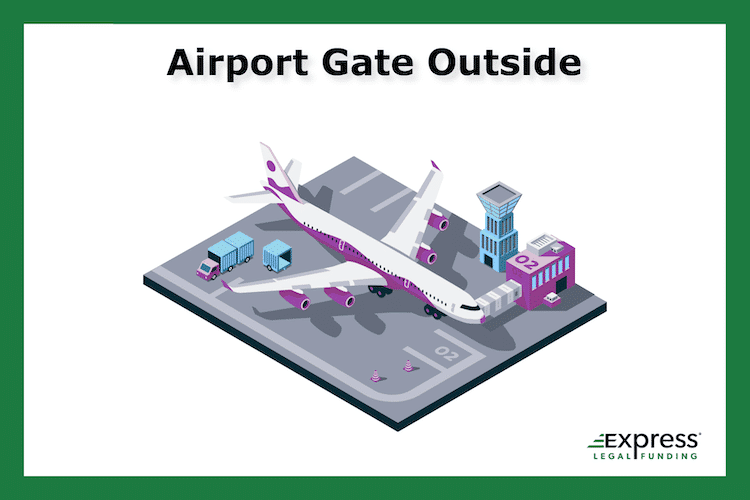
Among the leading causes of aviation incidents, loss of control in flight, typically due to inclement weather or mechanical failure, takes a significant spot.
Commercial aircraft today boast advanced technologies aiming to safeguard against air traffic controller error, mechanical failure, and other potential mishaps.
The FAA mandates strict regulations regarding aircraft design to ensure the maximum safety of commercial flights. However, the unexpected can still happen.
General Aviation vs. Commercial Aviation Plane Crashes
Does general aviation have a higher rate of accidents? Yes, data shared by the FAA and the aviation community show that general aviation, which consists of civilian-piloted planes, has much higher accident rates than those of commercial airlines.
Why Do Private Planes Crash More?
Private planes are statistically more dangerous and experience more crashes than chartered or commercial airlines due to less regulation and higher levels of pilot inexperience. Both factors specific to general aviation increase the chances of a pilot becoming disoriented and losing control of the aircraft.
Pilot Inexperience:
What is VFR into IMC? One of the more common airplane crash scenarios among newer pilots involves a concept known as VFR into IMC (Visual Flight Rules into Instrument Meteorological Conditions).
This dangerous situation occurs when pilots are not qualified to fly using instruments alone under instrument flight rules (IFR).
The novice pilot still requires a view of the ground to navigate and continues flying in deteriorating weather conditions, leading to a loss of control and a potential crash.
#5 – Sabotage and Hijackers
Still, despite the overall safety of commercial flights, sabotage and hijackers are two rarer causes of airplane crashes. Both types of dangers pose a risk of fatalities in mid-air and an increased chance of crashing (even when hijackers intend to land the plane).
One of the lesser-realized examples of attempted sabotage of an airplane is that of the now infamous domestic terrorist Ted Kaczynski (Unabomber).
The Unabomber’s Attempted Sabotage of American Airlines Flight 444
What happened with American Airlines Flight 444? On November 15, 1979, Ted Kaczynski attempted to sabotage American Airlines Flight 444, a tri-jet Boeing 727 from Chicago to Washington, DC, with a mail pipe bomb sent in a small crate wrapped with cardboard and paper.
Fortunately, the pipe bomb that was in the cargo hold failed to fully detonate, and the commercial airliner’s 72 passengers got back to the ground safely through an emergency landing.

Over the next 16 years, Ted Kaczynski, known as the Unabomber after Flight 444, carried out another 13 bomb attacks (nine via the mail) before finally being apprehended by the FBI on April 3, 1996, at the remote cabin he built five miles south of Lincoln, Montana.
September 11 Hijacker Attacks
What happened on 9/11? Unfortunately, the most well-known commercial airline hijackings were against the United States on Tuesday, September 11, 2001.
Commonly referred to as 9/11, the September 11 Attacks involved 19 al-Qaeda terrorists (backed by Osama bin Laden) carrying out four coordinated Islamist suicide attacks by hijacking commercial airliners (two Boeing 757s and two Boeing 767s).
There was a total of 2,977 victims killed in the 9/11 attacks.
Most of the fatalities were people who worked in the World Trade Center (WTC). The terrorist hijackers intentionally flew commercial airliners into the North and South WTC Towers in Lower Manhattan (Downtown New York City).
TSA airport security and FAA flight regulations were made much stricter in response to the September 11 Attacks.
Although sabotage and hijacking account for only 10% of airplane crashes, they are among the most deadly.
Aviation Accident Aftermath
Surviving a plane crash is a traumatic and terrifying experience that can radically change your perspective on flying. Some survivors swear off air travel altogether after experiencing a crash firsthand.
However, the odds of them having to deal with a recurrence in their lifetime are astronomically low, so much so, less than the chance of someone being struck twice by lightning.
Regardless, their aversion is understandable since physical and psychological trauma are powerful forces that can keep even the most formidable person from pursuing anything to do with its source.
Unfortunately, it is something that can follow us and our loved ones for life and is made that much worse by the property loss and injuries you will likely experience in the event of a crash.
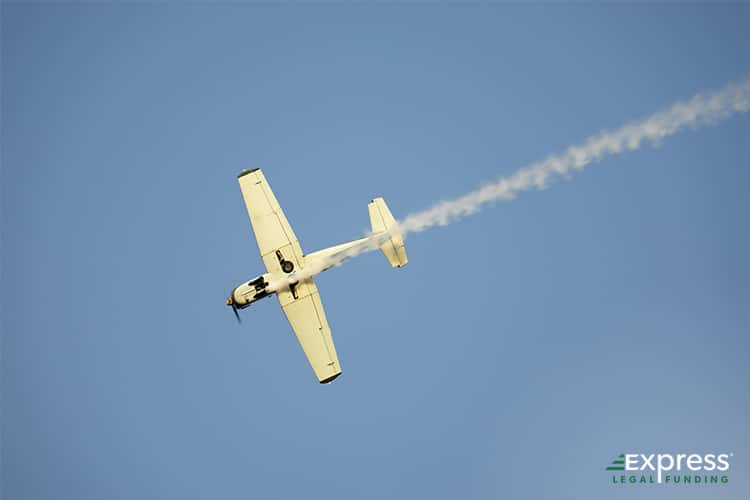
Airplane accident injuries cause both an emotional and a financial burden that can be a critical blow to your life, even if you are in a solid financial situation.
Lawsuits and Legal Options After an Airplane Crash
Being expected to replace the property lost in the crash while paying off your costly medical bills might seem unfair since the plane crash was not your fault.
Fortunately, there are legal safeguards in place that acknowledge and can help with this issue, such as the U.S. Department of
Transportation’s requirement for commercial airline carriers to have “aircraft accident liability insurance coverage” to protect consumers.
Due to having this insurance coverage, airlines generally are prepared to compensate the customers in the crash and their families via a monetary settlement.
Unfortunately, not every airline is willing to accept liability (They can be responsible for paying without being at fault for causing the crash.) to compensate the victims of the crash.
Reputational Damage: What Happened To ValuJet Airlines?
The airline carrier’s liability for the plane crash increases if the cause traces back to mechanical failure due to negligence, such as poor maintenance practices.
If it comes out that the airline neglected essential maintenance that costs lives, the airline will experience reputational damage, which may be too much to overcome.
This was the case for “ultra-low-cost” ValuJet Airlines, as it was plagued by reputational harm over its short lifetime (1992-1997). Plane crashes contributed to the now-defunct airline’s demise.
Consider Hiring an Aviation Accident Lawyer
As a result of this risk, airlines will typically hire public relations firms, which may advise to deny responsibility.
At that point, a crash survivor should contact an aviation accident lawyer or law firm for a free consultation and to hire them as legal representation.

Once hired, the personal injury attorney will likely send what is known as a “demand letter” before potentially filing a civil claim in court against the airline.
Filing a lawsuit can be crucial because it’s a mode for victims of commercial airline crashes to hold the carrier accountable for the harm they caused in the crash.
These lawsuits can be complex since many commercial airlines in the U.S. are multi-billion-dollar companies with deep pockets to fuel their legal defense.
Aviation Law and the Federal Tort Claims Act
Additionally, red tape and roadblocks can be put up by the FAA and the federal government (airports are own and run by government agencies, though the airlines are private companies).
Can You Sue the FAA?
Yes, civilians can file civil lawsuits against the FAA. For instance, situations involving a negligent air traffic controller who is alleged to not have upheld their duty of care can be sued along with the FAA due to the liberties provided under the Federal Tort Claims Act.
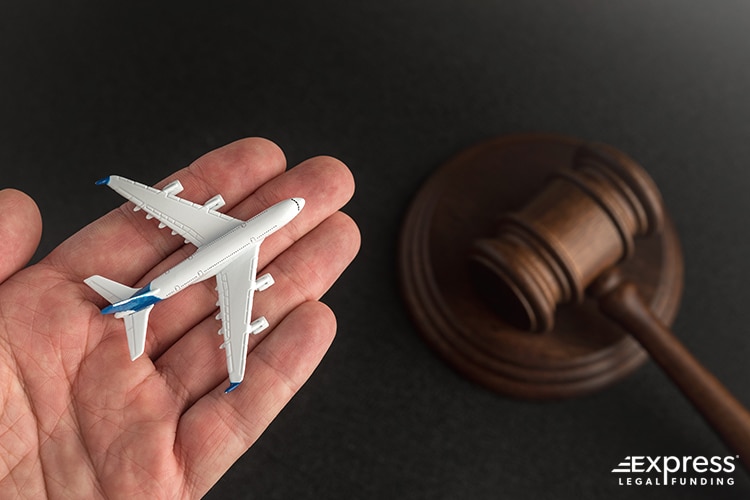
Ultimately, filing a successful claim against an airline is entirely possible. Unfortunately, the length of the case can exacerbate your financial issues if you are already struggling.
Closing Statements About the Types and Causes of Plane Crashes
Surviving a plane crash is terrifying and traumatic, but it is not something you will likely have to deal with since the odds are so low.
Nevertheless, it is a possibility worth considering since anything is possible and that 0.0000009% chance can hit out of nowhere.
What Are the Odds of Surviving a Plane Crash?
Fortunately, the odds of surviving an airplane crash are 95%, according to an NTSB survivability report, meaning you have little chance of dying, even if you are involved in a crash.
Unfortunately, while it is likely you will still be alive after a plane crash, you might have to file a lawsuit to reclaim damages from the crash, which can strain your financial resources beyond the losses incurred.
We at Express Legal Funding know how difficult recovering from the financial side of an accident can be. That is doubly true for airplane accidents where you could lose luggage full of valuables after literally falling out of the sky.
The high cost of medical expenses and missed work can make it nearly impossible for you to stay on top of the bills and payments you already owe.
That’s not even factoring in new purchases you will need to make in the aftermath while your case progresses through the civil law justice system.
Pre-settlement Funding For Aviation Accidents
Our lawsuit funding distinguishes us from credit-based industries, as we can offer you a form of non-recourse pre-settlement funding that isn’t a loan of any type, which is why the term lawsuit loan is often misused (in a select few states, the financing is a loan with a lender and a borrower).
As a leading legal funding company, we’re equipped to advance your funds with the contractual deal that our repayment hinges on the potential proceeds of your case, specifically, a settlement.
Consider it a purchaser/seller agreement where we buy a stake in your claim. This denotes that our payment comes when you settle or win your lawsuit.

In contrast, should your attorney proceed to litigate your case in court but unfortunately not achieve the financial recovery you seek, you are not obligated to repay us anything (More or less, no questions asked).
This is why legal funding is risk-free for you, the personal injury client, and not us, the pre-settlement funding company.
So, if you need financial assistance during your claim and know you can’t wait for your potential settlement check to clear someday in the hopefully not-so-distant future when your case ends, you should give us a call to learn more and apply for legal funding.
We also offer the option for you to apply online anytime, 24/7!
Lastly, regardless of whether you need pre-settlement funding or not, we hope you found this a helpful resource and guide about the different factors and causes of airplane crashes.
We encourage you to return and read one of our more than 100 articles in the Express Legal Funding company blog.
Our peer-reviewed collection of articles is one of the many things that separate us as better legal funding® industry leaders.
